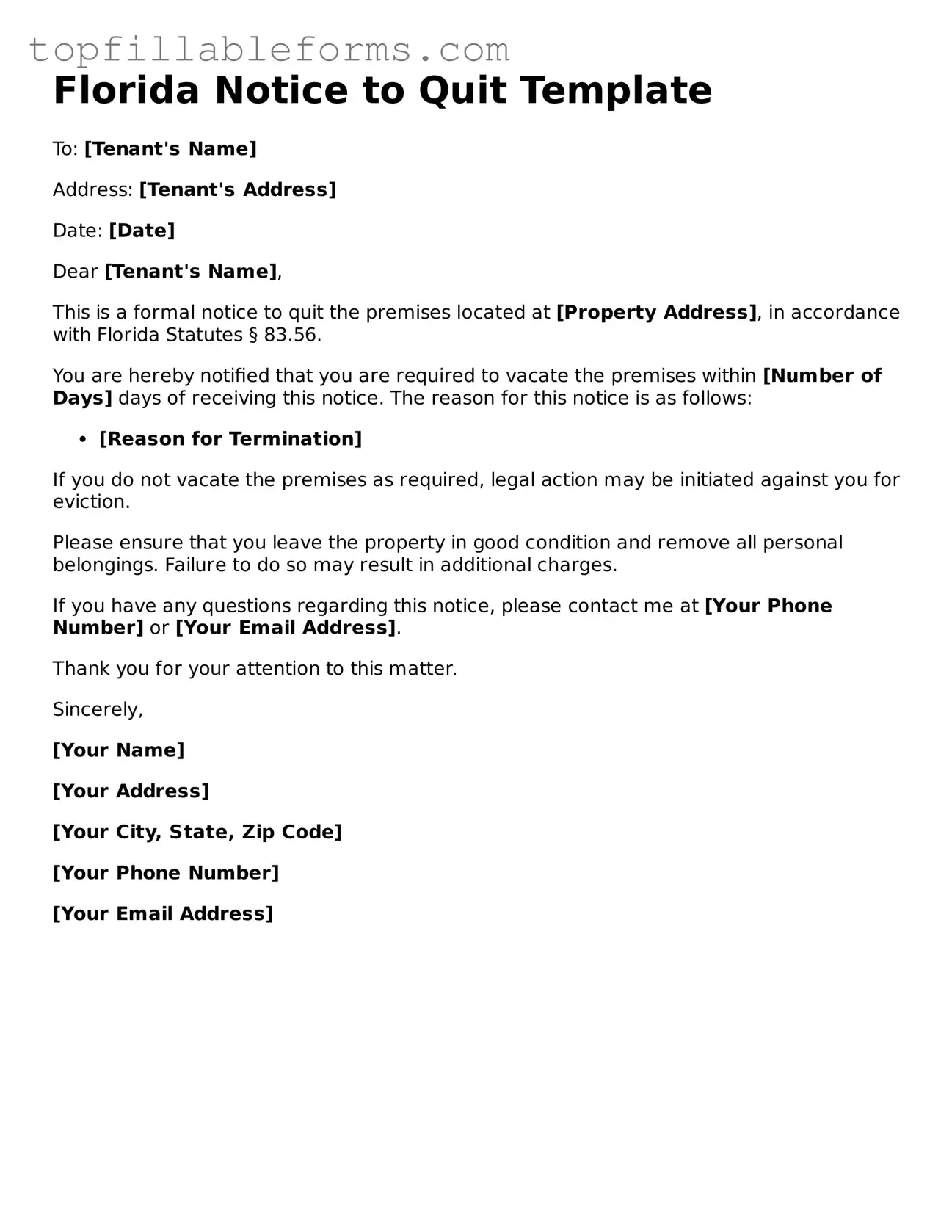Attorney-Verified Notice to Quit Template for Florida
The Florida Notice to Quit form is a legal document used by landlords to notify tenants of their intention to terminate a lease agreement. This form outlines the reasons for the termination and provides the tenant with a specified timeframe to vacate the property. Understanding this form is essential for both landlords and tenants to ensure compliance with Florida's rental laws.
Open Notice to Quit Editor Here
